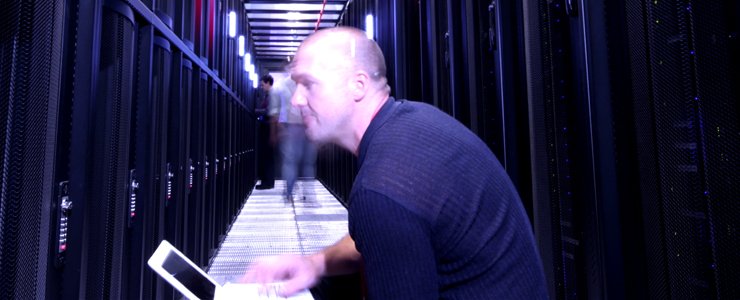
Data centers have quickly become the backbone of our world. From the global economy to the various fabrics that support our personal and professional lives, data centers make our digital selves possible. That’s why there’s so been much talk lately about how to improve the data center, how to make it more efficient, and how to improve outcomes for its clients. For those reasons, we are moving to a place where the data center will be fully virtualized.
Before we dive into the reasons why data center operators are pursuing virtualization, let’s define that word, as well as its logical end point, the software-defined data center. Virtualization is the ability to take one physical element and assign it a number of tasks where before it had only been able to perform one or lie dormant. The software-defined data center (SDDC) is a data center wherein all physical infrastructure elements have been virtualized.
In order to have a SDDC, the following three elements must be virtualized.
The computing platform. Here, servers are divvied up like a pie, into virtual machines (VMs). This means increased efficiency when it comes to power and space usage.
Software-defined storage. Here, the emphasis of how information is stored is accomplished through cloud services rather than hardware.
Software-defined networking. This refers to an organizing architecture that manages and distributes information in a more agile and efficient way.
A system management software is then employed to direct these three virtualized elements. What you probably see emerging here is an increase in flexibility of the systems that comprise the data center. Let’s find out why these elements add up to a better, smarter data center.
So, what are the benefits of the software-defined data center?
Energy Efficiency. Though security is (and likely always will be) among executives’ top concerns, the energy consumption of the data center is right up there along with it. Though cooling technologies have improved, the fact is that servers still put off significant amounts of heat. Perhaps the smartest way to reduce the cooling and power costs associated with these servers is to simply find a way to use fewer of them to do the same job. That’s what virtualization accomplishes. It also reduces the data center’s carbon footprint, which is increasingly important in these times.
Reduce Cost. Though enterprises are increasingly shifting their data center strategies from buy to rent at a considerable cost savings, the data center operators will also find savings in the reduction of the amount of hardware needed, as well as the resulting reduction in downtime, and maintenance and electricity costs. To a certain extent, the data center just runs itself.
Better Backups and Recovery. Virtual servers allow full backups to be made quicker than ever, and VMs can be shifted easily from one server to another. A “snapshot” can also be taken at any point throughout the day, resulting in more up-to-date data. All of that agility means that, should some sort of disaster strike, your critical assets are able to be recovered quicker and more reliably than before.
Vendor Flexibility. The move towards virtualization means that the importance of the hardware employed is much less important. Rather, it simply becomes the medium for the message to get across. This gives data center operators and clients the freedom to explore different partners and to mix and match the ‘as-a-service’ offerings they choose to implement.
Should data center operators strive for full virtualization now?
At the moment, it’s hard to recommend IT leaders across the board strive for a fully software-defined data center. That’s because it’s still relatively nascent technology. At the moment, it’s probably only the right fit for organizations with advanced expertise in I&O engineering and architecture, according to Gartner. But the writing appears to be on the wall, and a move toward virtualization in the data center is a move toward a future that is more efficient and agile, and produces more effective business insights.
Where is your business on the road to the software-defined data center? Have you gone full cloud or are you still mired in the discussion and debate stage? Join the conversation on the future of the data center by leaving a note on your experience in the comment section, or share this blog with your thoughts on social media.



